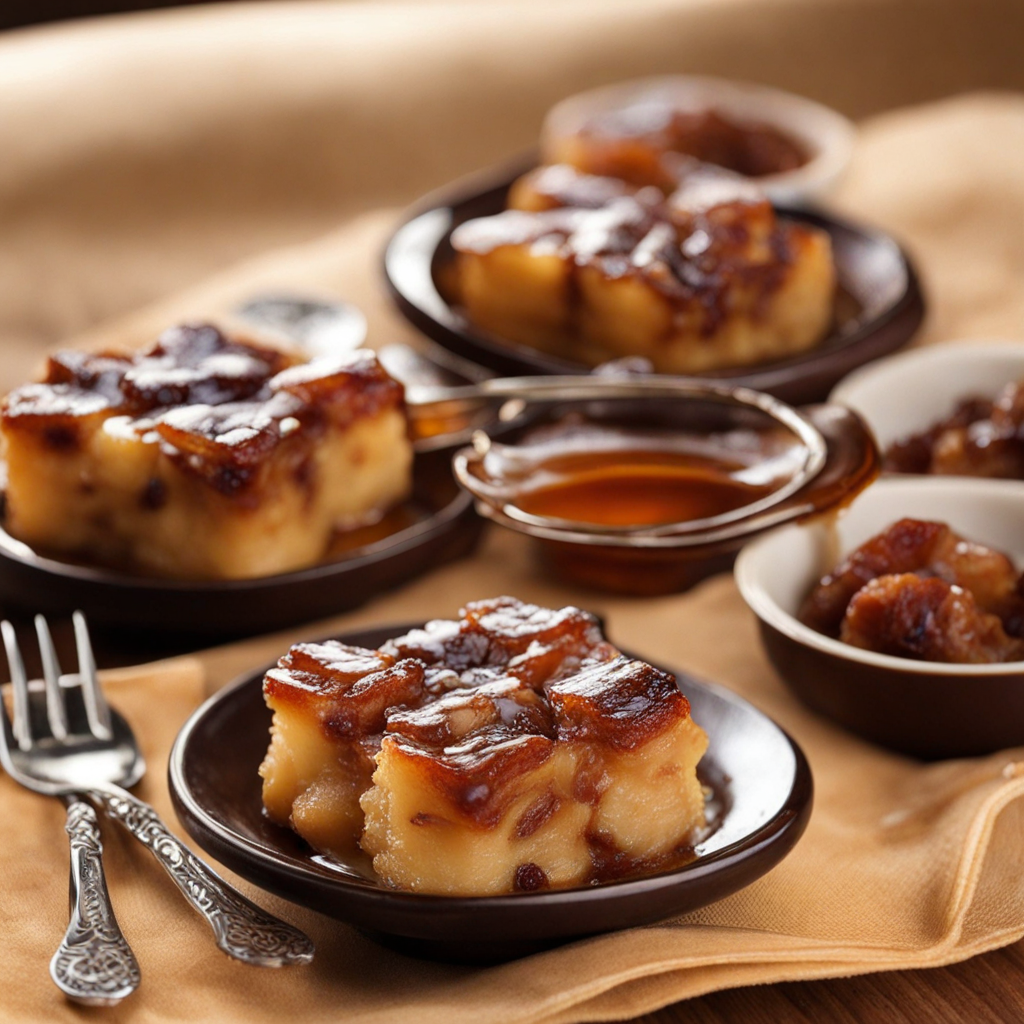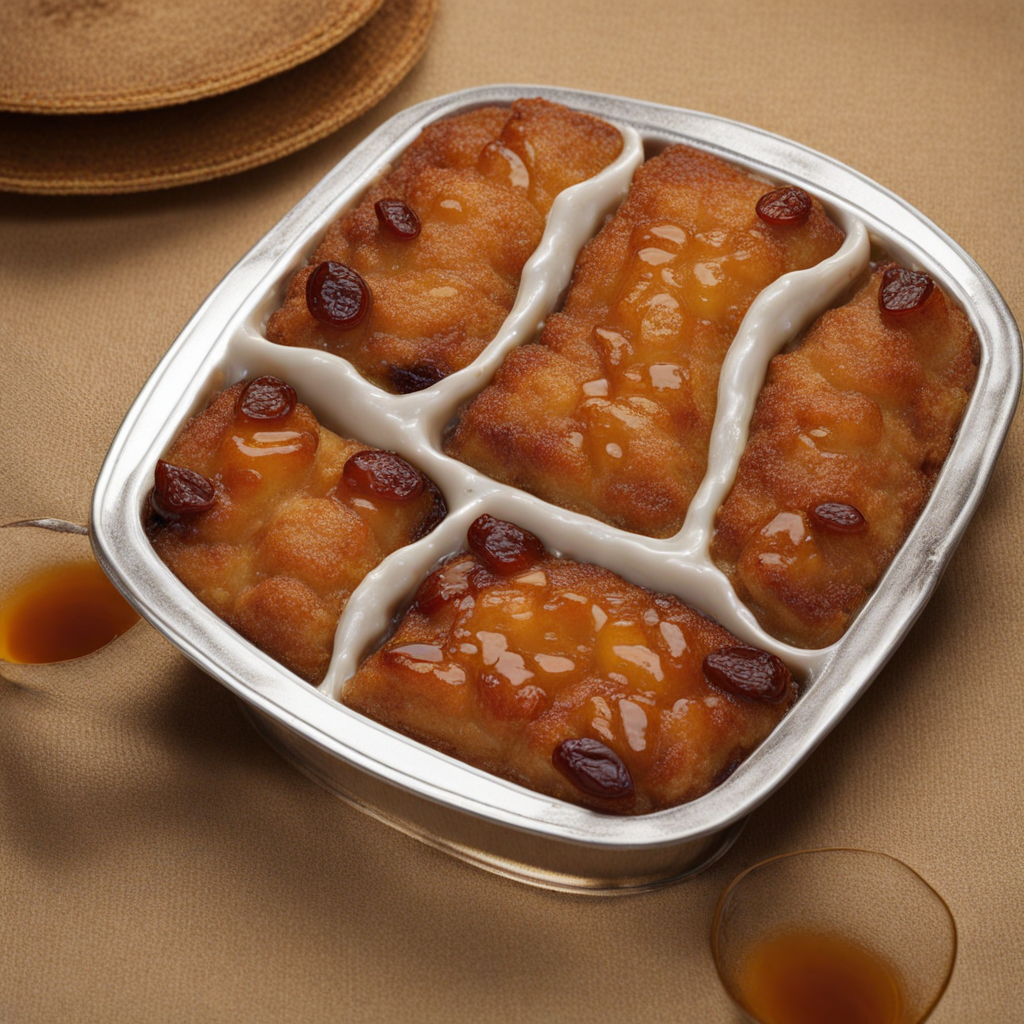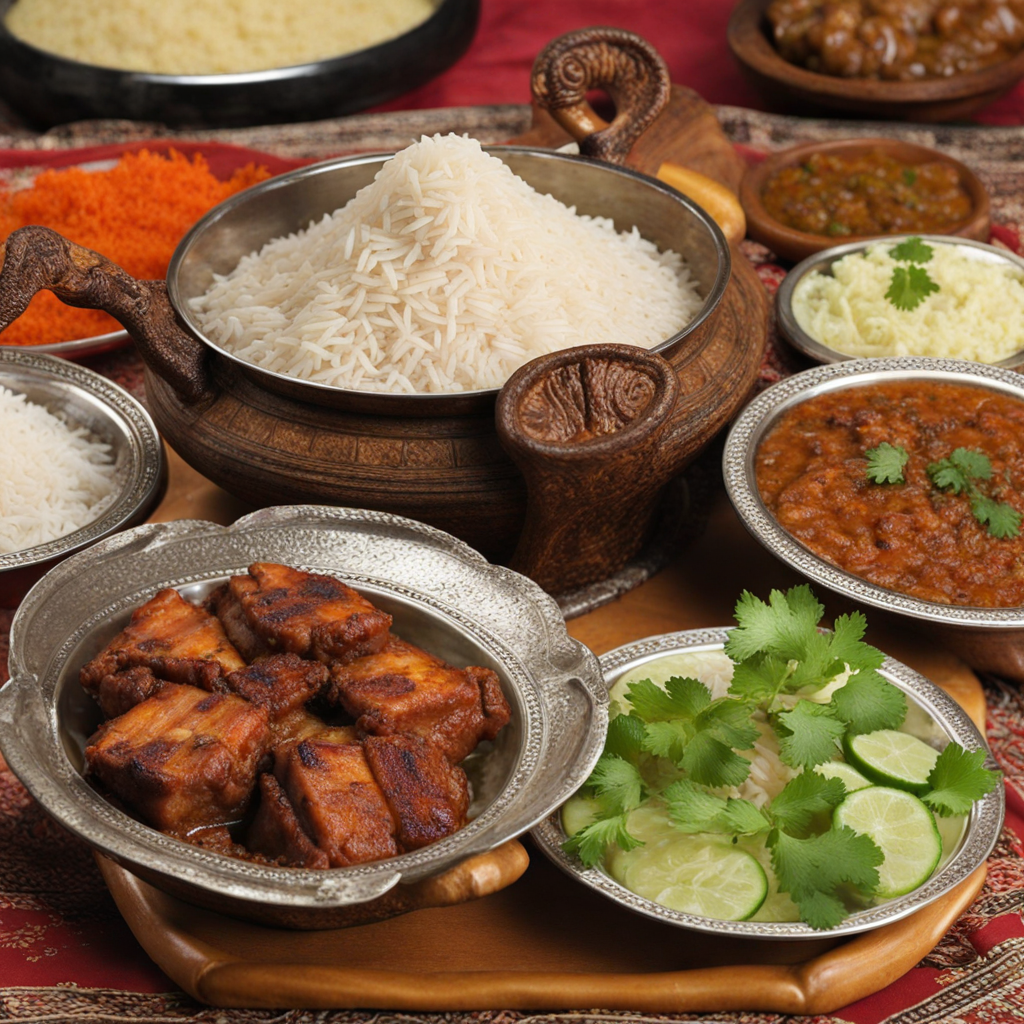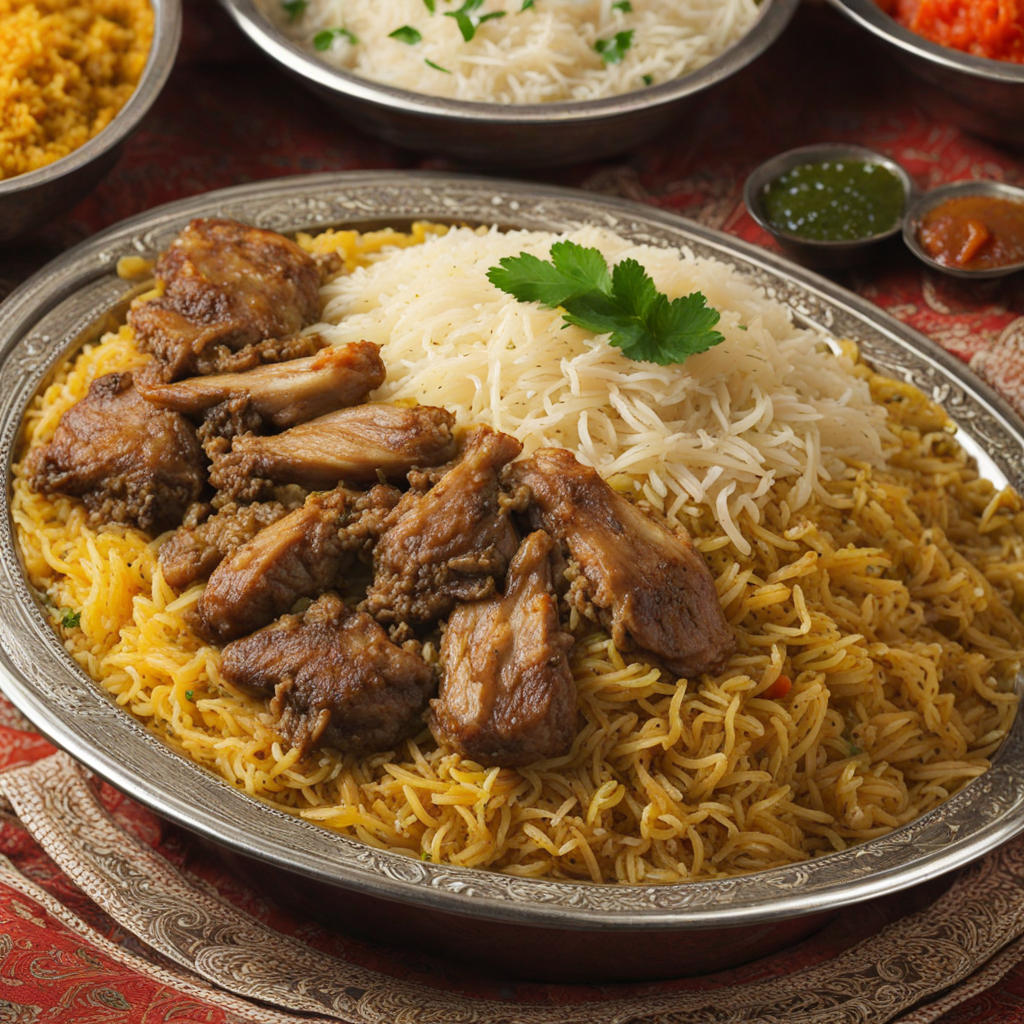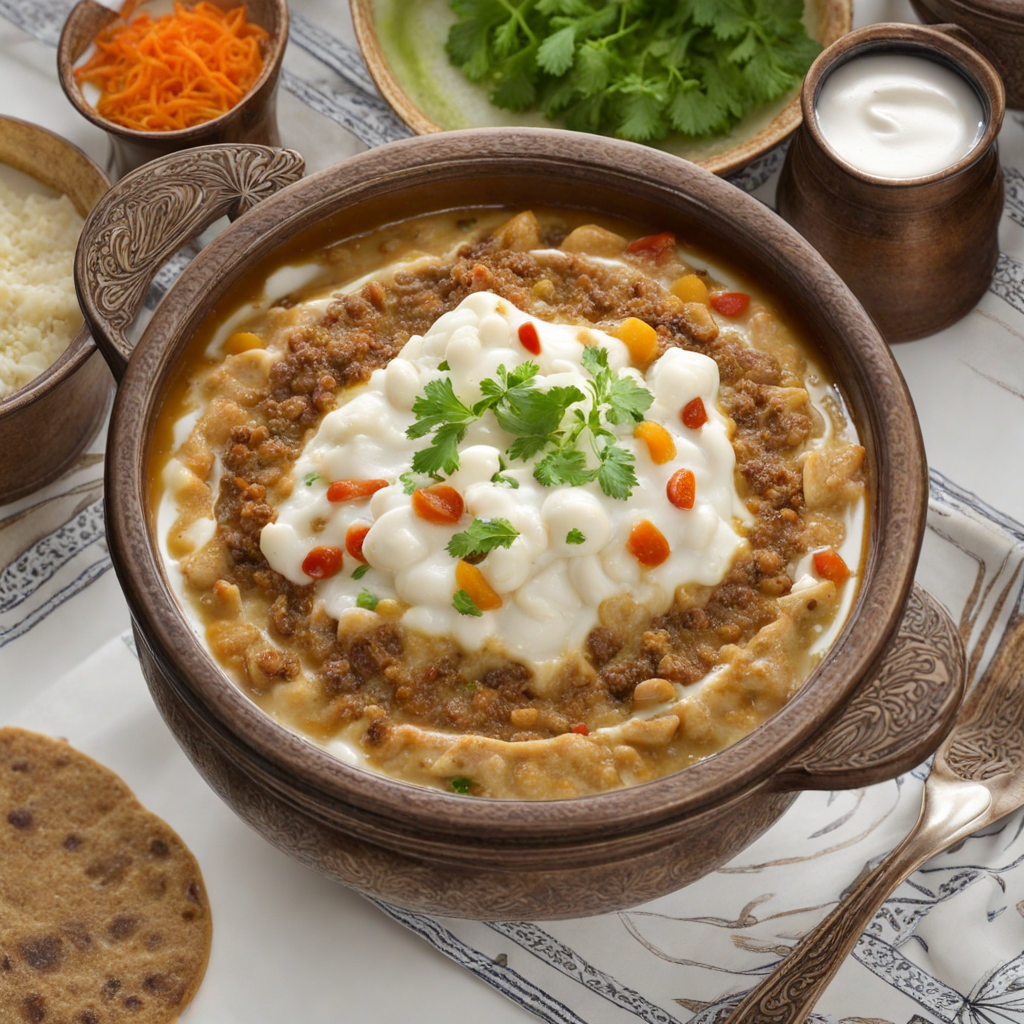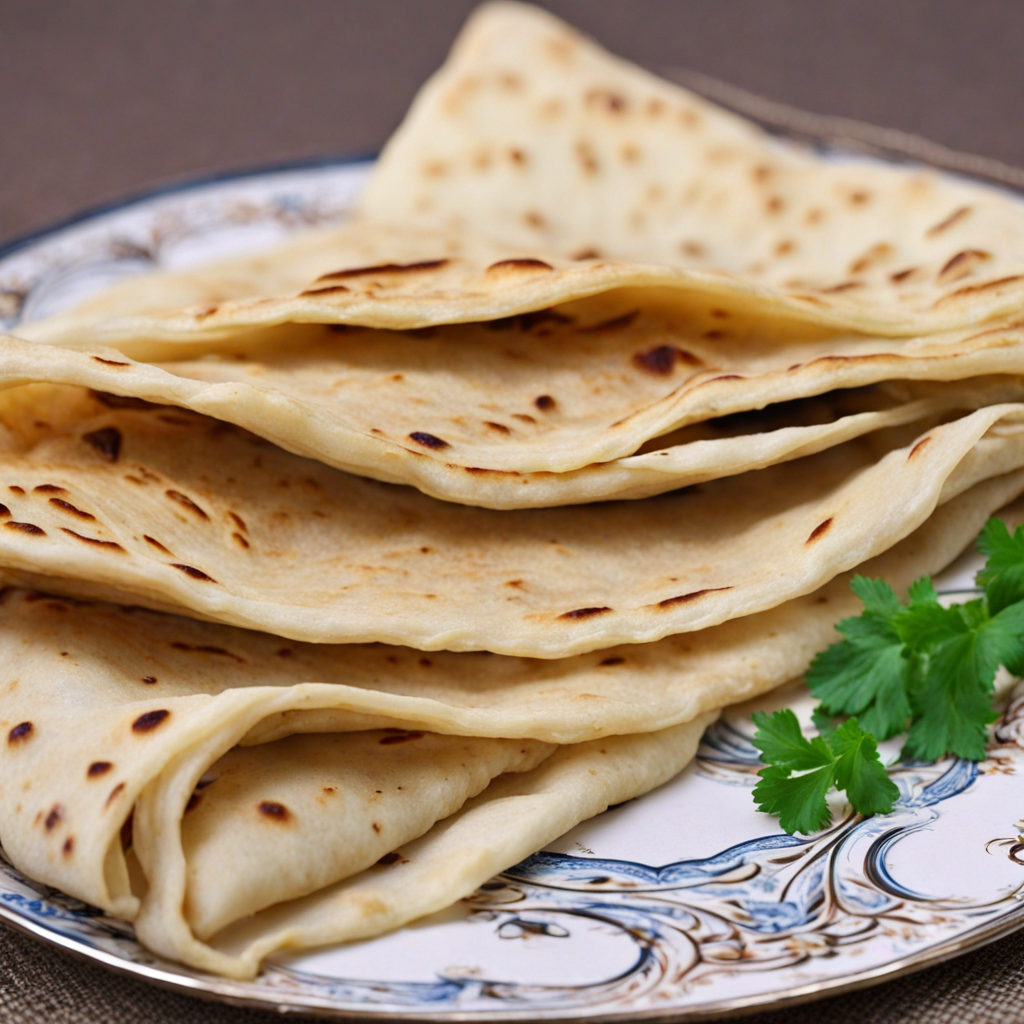Mofa
Mofa is a traditional Yemeni dish that offers a unique blend of flavors and textures, making it a culinary experience worth exploring. This hearty stew is primarily made with tender pieces of meat, often lamb or chicken, which are slow-cooked to perfection. The meat is infused with a variety of spices, including cumin, coriander, and turmeric, creating a warm and aromatic base. The addition of tomatoes and sometimes potatoes provides a rich, savory depth, while the optional inclusion of lentils adds a delightful creaminess that complements the dish beautifully. What sets Mofa apart is its distinctive method of preparation. Traditionally, the dish is cooked in a clay pot, allowing the flavors to meld and develop over time. This slow-cooking technique ensures that the meat becomes exceptionally tender and absorbs the spices thoroughly. Accompanying the stew are often flatbreads, which are perfect for scooping up the flavorful sauce, creating a satisfying and communal dining experience that is cherished in Yemeni culture. The experience of enjoying Mofa is not just about the taste; it’s also about the aroma and the warmth that comes with every bite. The combination of spices creates an inviting scent that lingers in the air, inviting you to indulge. As you dig into the stew, the explosion of flavors on your palate—earthy, savory, and slightly spicy—will transport you to the bustling streets of Yemen, making Mofa a dish that is not only a meal but also a journey into the heart of Yemeni cuisine.
How It Became This Dish
The Rich History of موفا (Mufa) in Yemen Introduction Mufa, a traditional Yemeni dish, exemplifies the rich tapestry of Yemen's culinary heritage. Known for its unique combination of flavors and textures, Mufa is much more than a meal; it is a cultural symbol steeped in history, tradition, and communal significance. This dish, which primarily consists of a blend of cooked grains and spices, has evolved over centuries, reflecting the changing dynamics of Yemeni society and its agricultural practices. Origins of Mufa The origins of Mufa can be traced back to Yemen's ancient agricultural practices, which date back thousands of years. Yemen's fertile highlands, with their varied climates and rich soils, have long been conducive to the cultivation of various grains, particularly barley and wheat. These grains formed the foundation of many traditional Yemeni dishes, including Mufa. Historical texts suggest that the dish may have roots in the ancient practices of the Himyarite Kingdom, one of the prominent civilizations in pre-Islamic Arabia. The Himyarites were known for their advanced agricultural techniques, including irrigation and crop rotation, which allowed them to produce an abundance of grains. As trade routes expanded and interactions with neighboring cultures increased, these agricultural practices and the resulting dishes, including Mufa, began to spread. Cultural Significance Mufa holds a special place in the hearts of the Yemeni people. It is often associated with hospitality and communal gatherings, making it a staple at weddings, religious celebrations, and family reunions. Sharing a meal of Mufa is a gesture of goodwill and unity, reflecting the deep sense of community that characterizes Yemeni culture. In addition to its role in social settings, Mufa also carries symbolic meanings tied to Yemeni identity. The dish is often seen as a representation of resilience and resourcefulness. In times of hardship, particularly during periods of conflict or economic strife, families have relied on Mufa for sustenance, as it can be made with inexpensive ingredients and is easily adaptable to available resources. Moreover, the preparation of Mufa often involves the whole family, with each member contributing to the process. This collaborative effort not only strengthens familial bonds but also serves as a means of passing down culinary traditions from one generation to the next. The preparation techniques and recipes for Mufa vary from region to region, each adding its unique twist, further enriching the dish's cultural significance. Ingredients and Preparation Traditionally, Mufa is made with a base of finely ground grains, typically barley or wheat, which are cooked until soft. The dish is often flavored with a variety of spices, including cumin, coriander, and sometimes turmeric, giving it a warm, aromatic profile. In some variations, ingredients like lentils, chickpeas, or vegetables are added, enhancing both the flavor and nutritional value. The preparation of Mufa can be labor-intensive, requiring the grains to be soaked, ground, and then cooked slowly to achieve the desired texture. This meticulous process is often performed in a communal setting, with family members gathering to help. The act of preparing Mufa is as significant as the dish itself, symbolizing the importance of community and cooperation in Yemeni culture. Evolution Over Time As Yemen has experienced various social, political, and economic changes over the centuries, so too has Mufa evolved. The dish has adapted to incorporate new ingredients and culinary techniques introduced through trade and cultural exchanges. For instance, the influence of Indian and East African cuisines can be seen in some contemporary interpretations of Mufa, where spices and cooking methods have been integrated to create new flavors. In the 20th century, particularly following the unification of North and South Yemen in 1990, Mufa began to see a revival in interest as part of a broader movement to celebrate and preserve Yemeni culinary traditions. Chefs and home cooks alike began to experiment with the dish, creating modern interpretations while respecting its traditional roots. This evolution has also been fueled by the global interest in Middle Eastern cuisine, with many Yemeni dishes, including Mufa, gaining recognition on the international culinary stage. Global Recognition and Modern Adaptations In recent years, Mufa has garnered attention outside of Yemen, particularly with the rise of global food movements that emphasize authentic and traditional cuisines. Yemeni restaurants and food trucks have begun to pop up in various cities around the world, introducing international audiences to the flavors of Yemen, with Mufa often featured prominently on their menus. Modern adaptations of Mufa have emerged, reflecting contemporary dietary preferences and trends. For instance, variations that cater to vegan and gluten-free diets have been developed, using alternative grains such as quinoa or millet. These adaptations demonstrate the dish's versatility while maintaining its essence as a comfort food that brings people together. Conclusion Mufa is more than just a dish; it is a representation of Yemen's rich cultural heritage and the resilience of its people. As an emblem of community, hospitality, and tradition, Mufa embodies the spirit of Yemen—a land with a deep connection to its agricultural roots and a profound appreciation for the communal act of sharing food. As the world continues to embrace diverse culinary traditions, Mufa stands as a testament to the enduring power of food in forging connections, celebrating heritage, and fostering understanding among cultures. As Yemen navigates its complex socio-political landscape, the future of Mufa promises to be an intriguing blend of tradition and innovation, ensuring that this beloved dish continues to nourish both body and soul for generations to come.
You may like
Discover local flavors from Yemen


